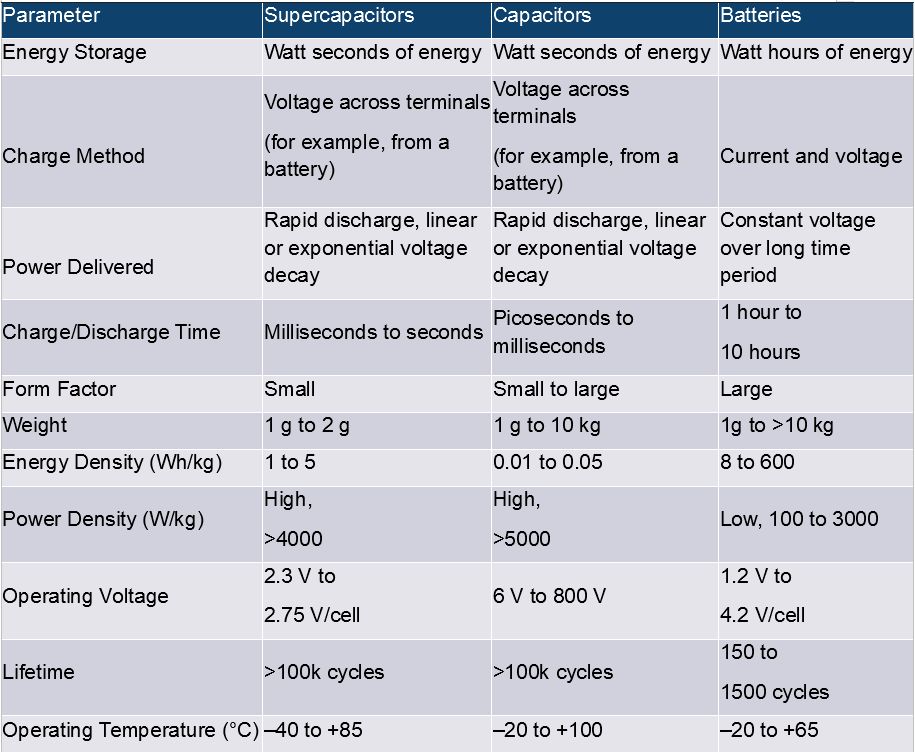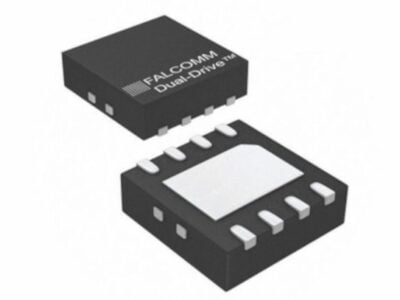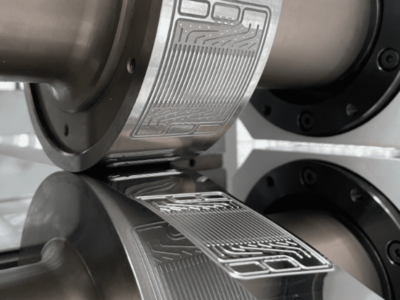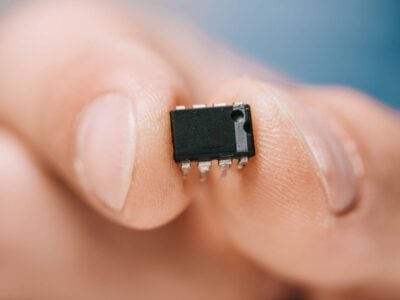
Keep powering your system when the primary supply is intermittent
The most common way of dealing with such circumstances is to use uninterruptible power supplies (UPSs) to cover these brief downtimes, thus ensuring high reliability, continuous operation of the system. Similarly, many of today’s emergency and standby systems are used to provide backup power for building systems to provide assurance that safety systems and critical equipment can maintain their operation during a power outage—whatever the root cause.
Obvious examples can be readily found in the ubiquitous handheld electronic devices used in our everyday lives. Because dependability is paramount, handhelds are carefully engineered with lightweight power sources for reliable use under normal conditions. But no amount of careful engineering can prevent the mistreatment they will undergo at the hands of people. For example, what happens when a factory worker drops a handheld portable scanning device, causing its battery to detach? Such events are electronically unpredictable and important data stored in volatile memory would be lost without some form of safety net—namely some sort of short-term power holdup system that stores sufficient energy to supply standby power until the battery can be replaced or the data can be stored in permanent memory.
In automotive electronic systems there are many applications that require continuous power even when a car is parked (engine not running), such as remote keyless entry, security, and even personal infotainment systems. These systems usually incorporate navigation, GPS location, and eCall functionality. It is easy to understand why these systems have to remain on even when the car is not moving, since the GPS aspect of these systems must be always-on for emergency and security purposes. This is a necessary requirement so that rudimentary control can be activated by an external operator when necessitated.
Consider an eCall system, which is becoming more pervasive in newer cars across the globe. It’s a pretty simple bit of technology: in the event of a collision in which a car’s airbags are deployed, the eCall system automatically contacts emergency services. It uses GPS to relay the time, your location, what type of car you’re in, and what kind of fuel it uses to the authorities, while a microphone in the car allows you to speak directly to call handlers when the system is activated. These eCall system can share what direction you were travelling in when the incident occurred, allowing authorities to know which side of the freeway they need to head to in the event of a collision. All this allows ambulance, police, and fire crews to reach you as quickly as they can following an accident, armed with as much information as possible. An individual can also activate eCall by pressing a button, so if someone becomes ill (or has been injured in a collision in which the airbags haven’t deployed), help can still be easily summoned.
Storage mediums
Having acknowledged the need for backup power in a wide array of systems, the question then arises: what are the options for storage mediums for this type of backup power? Traditionally, the choices have been capacitors and batteries.
It is fair to say that capacitor technology has played a major role in power transmission and delivery applications for multiple decades. However, in the past decade, substantial research and development has led to significant advances in capacitor design and capabilities. These advanced capacitors or supercapacitors (also known as ultracapacitors) are ideal for use in battery energy storage and backup power systems. They may be limited in terms of their total energy storage; nevertheless, they are energy dense. Furthermore, they possess the ability to discharge high levels of energy quickly and recharge rapidly.
Supercapacitors are not only compact, but they are robust and reliable, and they can support the requirements of a backup system for short-term power-loss events such as the ones already outlined herein. They can easily be paralleled or stacked in series or even a combination of both to deliver the necessary voltage and current demand by the end application. Compared to standard ceramic, tantalum, or electrolytic capacitors, supercapacitors offer higher energy density and higher capacitance in a similar form factor and weight, so they are also finding use in a variety of high peak power and portable applications in need of high current bursts or momentary battery backup, such as UPS systems.
Batteries, on the other hand, can store a lot of energy, but are limited in terms of power density and delivery. Due to the chemical reactions that occur within a battery, they have limited life with regard to cycling. As a result, they are most effective when delivering modest amounts of power over a long period of time, since pulling many amps out of them very quickly severely limits their useful operating life. Table 1 shows a summary of the pros and cons among supercapacitors, capacitors, and batteries.

New backup manager power solutions
Now that we have established that either supercapacitors, batteries, and/or a combination of both are candidates for use as a backup power sources in almost any electronic system, what are some of the solutions available?
First of all, any IC solution would need to be a complete lithium ion battery backup power management system with the capability to keep 3.5 V to 5 V supply rails active during a main power failure event. Since batteries provide considerably more energy than supercapacitors, they are superior for applications that require backup for extended periods of time. Accordingly, any IC solution would need to have an on-chip bidirectional synchronous converter to provide high efficiency charging of the backup battery, as well as be able to deliver high current backup power to the downstream load should an interruption on the main power rail occur.
Thus, when external power is available, the device would operate as a step-down battery charger for single-cell Li-ion or LiFePO4 batteries while giving preference to the system load. However, if the input supply was to suddenly drop below the adjustable power-fail input (PFI) threshold the IC would need to operate as a step-up regulator, capable of delivering multiple amps to the system output from the backup battery. Accordingly, if a power failure were to occur, then the IC would need power path control to provide reverse blocking and a seamless switchover between input power and the backup power source.
Figure 1 shows a typical application schematic for this purpose using Analog Devices’ Power by Linear LTC4040 lithium ion battery backup manager.

a user set PFI threshold.
The LTC4040 also includes optional overvoltage protection (OVP) that protects the IC from input voltages greater than 60V with an external FET. Its adjustable input current limit function enables operation from a current limited source while prioritizing system load current over battery charge current. An external disconnect switch isolates the primary input supply from the system during backup. The LTC4040’s 2.5 A battery charger provides eight selectable charge voltages optimized for Li-ion and LiFePO4 batteries. The device also includes input current monitoring, an input power loss indicator, and a system power loss indicator.
Now, supercapacitors have higher power density than batteries, making them suitable for systems whose applications require high peak power backup for brief time intervals. To support such applications, Analog Devices’ LTC4041 uses an on-chip bidirectional synchronous converter to provide high efficiency step-down supercapacitor charging, as well as high current, high efficiency boost backup power.

schematic.
When external power is available, the device operates as a step-down battery charger for one or two supercapacitor cells while giving preference to the system load. When the input supply drops below the adjustable PFI threshold, the LTC4041 switches to step-up mode operation and can deliver up to 2.5A to the system load from the supercapacitor(s). During a power fail event, the device’s PowerPath control provides reverse blocking and a seamless switchover from input power to backup power. Typical applications for the LTC4041 include ride-through “dying gasp” supplies, high current ride-through 3 V to 5 V UPSs, power meters, industrial alarms, servers, and solid-state drives. Figure 2 shows a typical LTC4041 application schematic.
The LTC4041 includes an optional OVP function using an external FET that can protect the IC from input voltages greater than 60 V. An internal supercapacitor balancing circuit maintains equal voltages across each supercapacitor and limits the maximum voltage of each supercapacitor to a predetermined value. Its adjustable input current limit function enables operation from a current limited source while prioritizing system load current over battery charge current. An external disconnect switch isolates the primary input supply from the system during backup.
There are many IC options for designers to consider for their specific needs, giving them an easy method to have backup power if the main power is interrupted or lost, regardless of whether their storage medium is a supercapacitor, an electrolytic capacitor, or even a battery. So, make sure that your system has the right backup when it is needed.
About the Authors
Tony Armstrong is the product marketing director for Analog Devices’ Power by Linear product group – www.analog.com. He can be reached at anthony.armstrong@analog.com.
Steve Knoth is a senior product marketing engineer in Analog Devices’ Power by Linear Group. He can be reached at steve.knoth@analog.com.
 If you enjoyed this article, you will like the following ones: don't miss them by subscribing to :
eeNews on Google News
If you enjoyed this article, you will like the following ones: don't miss them by subscribing to :
eeNews on Google News




